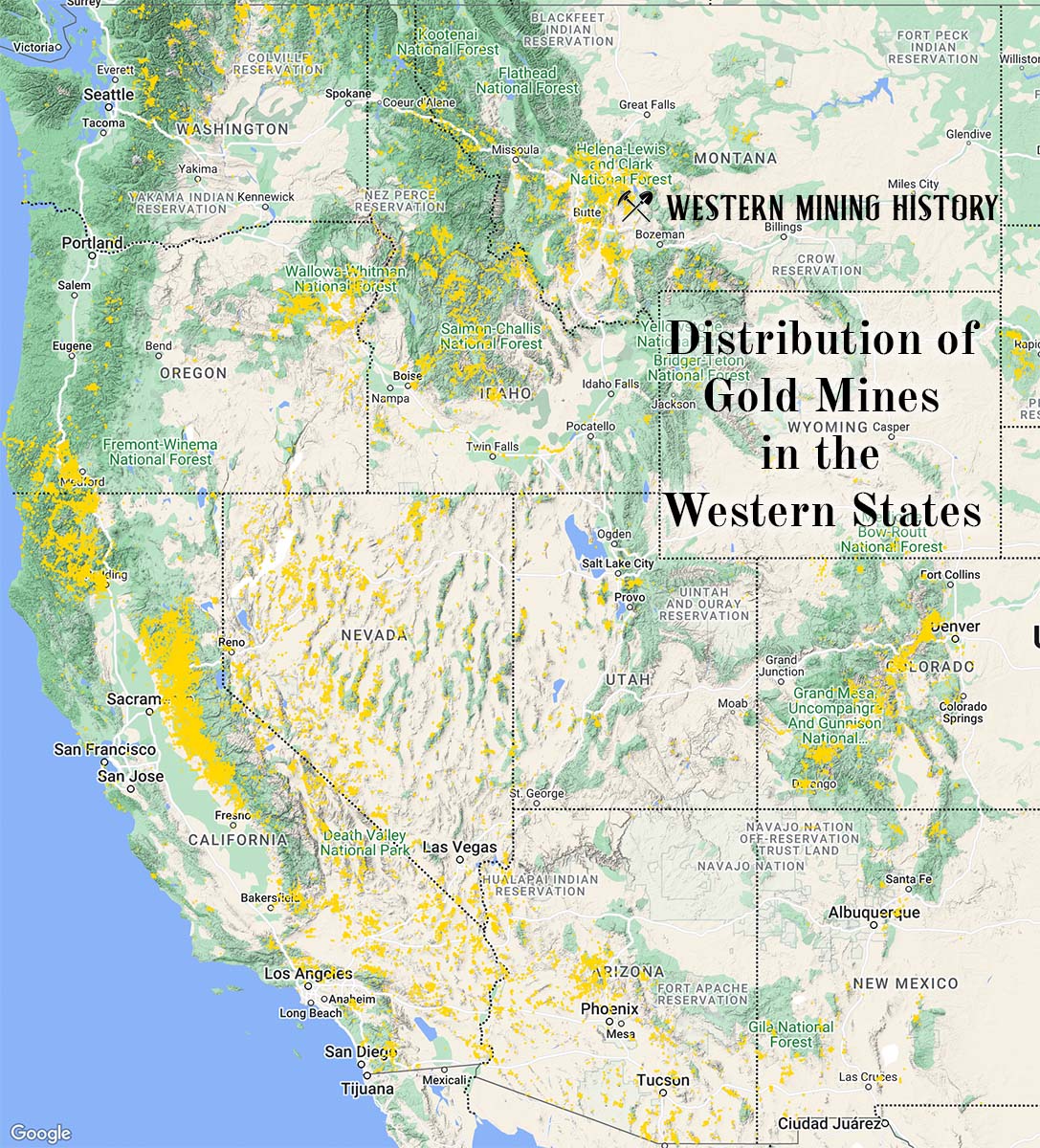The Miller Group is a lead, silver, and gold mine located in Utah county, Utah at an elevation of 9,800 feet.
About the MRDS Data:
All mine locations were obtained from the USGS Mineral Resources Data System. The locations and other information in this database have not been verified for accuracy. It should be assumed that all mines are on private property.
Mine Info
Elevation: 9,800 Feet (2,987 Meters)
Commodity: Lead, Silver, Gold
Lat, Long: 40.54667, -111.62056
Map: View on Google Maps
Miller Group MRDS details
Site Name
Primary: Miller Group
Secondary: Miller Mine
Secondary: Miller Mining and Smelting Co.
Secondary: Wyoming Tunnel
Secondary: Lost Hope Tunnel
Secondary: Lady Annie Tunnel
Commodity
Primary: Lead
Primary: Silver
Primary: Gold
Secondary: Copper
Secondary: Zinc
Location
State: Utah
County: Utah
District: American Fork District
Land Status
Land ownership: Private
Note: the land ownership field only identifies whether the area the mine is in is generally on public lands like Forest Service or BLM land, or if it is in an area that is generally private property. It does not definitively identify property status, nor does it indicate claim status or whether an area is open to prospecting. Always respect private property.
Holdings
Not available
Workings
Type: Underground
Ownership
Not available
Production
Year: 1872
Time Period: 1870-1872
Description: Cp_Grade: ^10 Dollars/Ton Au, 70oz/Ton Ag, 62% Pb
Year: 1919
Time Period: 1904-1919
Description: Cp_Grade: ^13.30 Dollars/Ton Au, 15.9oz/Ton Ag, 32.25% Pb
Deposit
Record Type: Site
Operation Category: Past Producer
Deposit Type: Replacement
Operation Type: Unknown
Year First Production: 1870
Discovery Year: 1870
Discovery Method: Ore-Mineral In Place
Years of Production:
Organization:
Significant: N
Deposit Size: S
Physiography
General Physiographic Area: Rocky Mountain System
Physiographic Province: Middle Rocky Mountains
Physiographic Detail: Wasatch Mountains
Mineral Deposit Model
Not available
Orebody
Form: POD
Structure
Type: R
Description: Uinta-Cottonwood Arch, Cordilleran Hingeline, Sevier Overthrust Belt
Type: L
Description: Numerous East-Striking Faults Of The Miller Hill Fault Zone
Alterations
Alteration Type: L
Alteration Text: Oxidation
Rocks
Name: Diorite
Role: Associated
Age Type: Associated Rock Unit
Age Young: Pliocene
Name: Diorite
Role: Associated
Age Type: Associated Rock
Age Young: Pliocene
Analytical Data
Analytical Data: HIGHLY VARIABLE. RICH OXIDIZED ORE CONTAINED 40 TO 83% PB, 15 TO 125OZ/TON AG, O TO 2.77OZ/TON AU
Materials
Ore: Malachite
Ore: Smithsonite
Ore: Gold
Ore: Galena
Gangue: Quartz
Gangue: Calcite
Comments
Comment (Location): TOWNSHIP UNSURVEYED. UTM COORDINATES GIVEN FOR CARD ARE FOR THE PORTAL OF THE SUPRISE TUNNEL. UTM COORDINATES FOR OTHER PROMINENT TUNNELS ARE AS FOLLOWS: MORMAN TUNNEL 4488150 N, 487100 E, TREE TUNNEL-4488350 N, 487220 E, WYOMING TUNNEL-4488450 N, 487350 E, LADY ANNIE TUNNEL 4488550 N, 487350 E, MIDWEST TUNNEL 4487900 N, 487500 E ; INFO FROM LAND.ST :1983
Comment (Production): PRODUCTION FOR THE YEARS 1873 TO 1876 ARE RECORDED, BUT PRODUCTION WAS STEADY
Comment (Development): MILLER MINE WAS LARGEST IN DISTRICT, OPERATED CONTINUOUSLY FROM 1870 TO 1876
Comment (Deposit): DEPOSITS ARE OF REPLACEMENT ORIGIN. SIX TO EIGHT ORE BODIES WERE DISCOVERED. ORE BODIES ARE CONFORMABLE TO BEDDING, ELONGATE IN AN EAST WEST DIRECTION, AND PRIMARILY HOSTED BY HIGHLY SHATTERED MAXFIELD LIMESTONE. ENTIRE MINE AREA IS 1200 FT LONG BY 400 FT WIDE. MINERALIZING SOLUTIONS CAME UP ALONG EAST STRIKING FISSURES AND REPLACED LIMESTONE. OXIDATION HAS BEEN EXTREME
Comment (Workings): 13 ADITS, ONE SHAFT, AND ONE PROSPECT PIT SHOWN ON MAP. LOCATIONS OF PROMINENT TUNNELS GIVEN UNDER LOCATION COMMENTS SECTION. NAMES OF LESS PROMINENT TUNNELS ARE UPPER WYOMING, CAR, ROCK, SHAMROCK, AND SARCHFIELD. WORKINGS CONSIST OF THESE TUNNELS, INTERCONNECTED BY RAISES, SHAFTS, AND INCLINES, AND EXTENSIVE STOPES. MINE MAP PROVIDED BY CALKINS AND BUTLER, 1943, PLATE 50
Comment (Geology): HIGHLY SHATTERED MAXFIELD LIMESTONE IS MAIN HOST FOR REPLACEMENT ORE. ORE IS HIGHLY OXIDIZED
References
Reference (Deposit): BUTLER, B.S., LOUGHLIN, G.F., HEIKES, V.C., AND OTHERS, 1920, THE ORE DEPOSITS OF UTAH: U.S. GEOLOGICAL SURVEY PROF. PAPER NO. 111.
Reference (Deposit): BAKER, A.A., CALKINS, F.C., CRITTENDEN, M.D., JR. AND BROMFIELD, C.S., 1966, GEOLOGIC MAP OF THE BRIGHTON QUADRANGLE, UTAH: U.S. GEOLOGICAL SURVEY GEOL. QUAD. MAP GQ-534
Reference (Production): BUTLER 1920 AND CALKINS AND BUTLER, 1943
Reference (Deposit): CALKINS, F.C., AND BUTLER, B.S., 1943, GEOLOGY AND ORE DEPOSITS OF THE COTTONWOOD-AMERICAN FORK AREA, UTAH: U.S. GEOLOGICAL SURVEY PROF. PAPER NO. 201.
The Top Ten Gold Producing States

These ten states contributed the most to the gold production that built the West from 1848 through the 1930s. The Top Ten Gold Producing States.